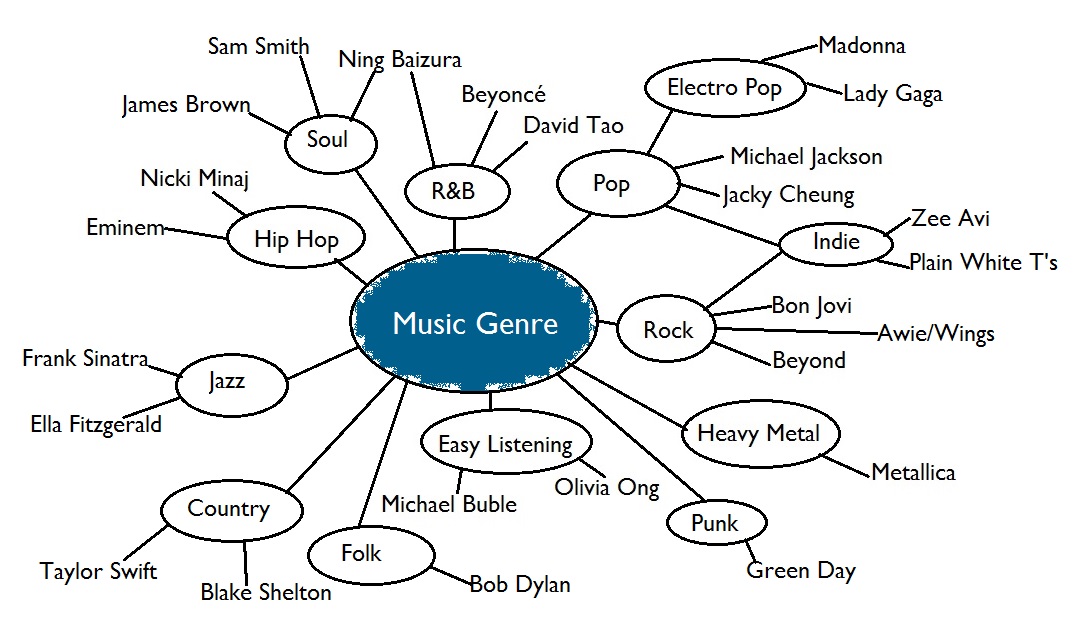Music Genres and Subgenres
Music genres are categories that identify pieces of music as belonging to a shared tradition or set of conventions. Throughout history, various genres and subgenres have emerged, reflecting cultural shifts and technological advancements. This overview explores the evolution of music genres and highlights key subgenres.
Early History of Music Genres
Ancient and Classical Music:
The earliest music genres can be traced back to ancient civilizations, where music played a crucial role in religious and social ceremonies. In ancient Greece, genres included dithyrambs (choral hymns) and paeans (songs of praise). Similarly, in ancient China and India, music was integral to rituals and storytelling.
Medieval and Renaissance:
During the Medieval period (500-1400 AD), sacred music dominated, with Gregorian chant being a prominent genre. The Renaissance (1400-1600 AD) saw the rise of polyphonic music, where multiple independent melody lines were sung simultaneously. Genres like the madrigal and motet became popular during this time【40†source】【40†source】.
Development of Modern Music Genres
Baroque and Classical:
The Baroque period (1600-1750) introduced genres such as the concerto, sonata, and opera. Composers like Johann Sebastian Bach and Antonio Vivaldi were key figures. The Classical period (1750-1820) emphasized clarity and form, leading to genres like the symphony and string quartet, with composers like Wolfgang Amadeus Mozart and Ludwig van Beethoven leading the way【40†source】【40†source】.
Romantic and Early 20th Century:
The Romantic era (1820-1900) focused on emotional expression, giving rise to genres like the symphonic poem and the art song (Lied). The early 20th century saw the development of new genres like jazz and blues, rooted in African American musical traditions, which profoundly influenced popular music【40†source】.
Evolution of Popular Music Genres
Jazz and Blues:
Jazz emerged in the early 20th century, characterized by improvisation and complex rhythms. Subgenres include swing, bebop, and free jazz. Blues, with its origins in African American spirituals and work songs, gave rise to subgenres like Delta blues and Chicago blues.
Rock and Roll:
In the 1950s, rock and roll revolutionized music with its energetic rhythms and use of electric guitars. Key figures included Elvis Presley and Chuck Berry. Subgenres such as rockabilly, surf rock, and psychedelic rock followed in the 1960s and 1970s, leading to the development of hard rock and punk rock【40†source】【40†source】.
Hip-Hop and Electronic Music:
Hip-hop emerged in the 1970s in the Bronx, characterized by rapping, DJing, and breakdancing. Key subgenres include gangsta rap, conscious rap, and trap. Electronic music developed alongside advances in technology, leading to genres like techno, house, and dubstep【40†source】【40†source】.
Contemporary Music Genres
Pop:
Pop music, characterized by its mass appeal and catchy melodies, has evolved significantly since the 1950s. Subgenres include synth-pop, dance-pop, and K-pop. Artists like Madonna, Michael Jackson, and Taylor Swift have been influential in shaping pop music【40†source】.
Country:
Country music, with roots in folk and blues, has diversified into subgenres like honky-tonk, bluegrass, and contemporary country. Artists like Johnny Cash, Dolly Parton, and Garth Brooks have made significant contributions to the genre【40†source】.
Electronic Dance Music (EDM):
EDM encompasses a wide range of electronic music genres designed for dance clubs and festivals. Subgenres include trance, drum and bass, and electro house. DJs like Tiësto, David Guetta, and Calvin Harris have popularized EDM worldwide【40†source】.
References
- AllMusic – Music Genres
- Encyclopedia Britannica – Music
- Rock and Roll Hall of Fame
- The History of Rock Music
- Jazz History Tree
By exploring the history and evolution of music genres, we gain a deeper understanding of how cultural and technological changes have shaped the music we enjoy today. Each genre and subgenre reflects the creativity and innovation of artists across different eras, contributing to the rich tapestry of global music culture.


Leave a Reply